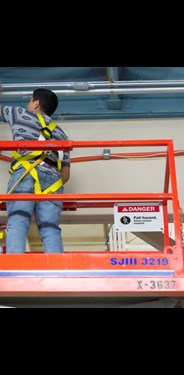Fewer Injuries, More Accidental Deaths in 2017
03
February,
2023
2 MINUTE READ

The U.S. Bureau of Labor and Statistics (BLS) reports that in 2017 there were 45,800 fewer nonfatal injuries. The report also shows that California, the largest U.S. state by population, had 466,600 nonfatal occupational injuries in 2017. That number is stable from the prior year. All relatively good news.
However, new data from the Center for Disease Control and Prevention (CDC), which was analyzed and released by the National Safety Council, show that the number of accidental deaths has risen by 5.3 percent. According to NSC, the CDC report shows that from 2016-2017 there were 169,936 preventable deaths the highest recorded in U.S. history.
"The latest CDC data show that the U.S. life expectancy has declined over the past few years," CDC Director Robert R. Redfield said. "Tragically, this troubling trend is largely driven by deaths from drug overdose and suicide. Life expectancy gives us a snapshot of the nation's overall health and these sobering statistics are a wake-up call that we are losing too many Americans, too early and too often, to conditions that are preventable."
Accident Prevention
There will always be opportunities for employers to improve the health and safety of their workers and work environment. The NSC information shows that preventable death occurrences were mostly attributed to drug overdoses/poisonings, vehicle crashes, and falls. In the workplace, managers and other safety support staff can use simple tips to assist in injury and accident prevention. Ensure proper work procedures are established and followed, such as:
- Chemical safety: Provide safety information about hazardous chemicals in a workplace through safety data sheets. Keep proper communication of chemicals and chemical working areas using labels and documents for chemical safety.
- Fall protection: OSHA shows a 19 percent increase in violations of general requirements for fall protection, making it the top OSHA violation for 2018. When personal fall arrest systems are required on a worksite, communicate that information to workers through signs and labels.
- Safe ladder use: Another top OSHA violation, improper ladder use is at No. 6. Workers should know how to ascend and descend a ladder as part of required fall protection training and hazard mitigation. Ladder information such as type, size, and weight limits should be listed on equipment labels.
- Work vehicle safety: Promote safe driving: Some work should only be handled by workers who have been trained and certified, such as cranes, forklifts, and other mobile machinery. OSHA estimates each year that there are about 110,000 forklift accidents. Evaluate work vehicle operator performance routinely.
Increase Safety Vigilance

Workplace injuries are declining but accidents that are killing workers are not. An injured worker spends an average of eight days away from work, according to the BLS. Workplaces can drive down injuries and accidents through continuous vigilance of safety best practices. Ensure workers are up to date on policies and procedures that can protect them, such as safe lifting practices and slip, trip, and fall mitigation. Reinforce safety programs by marking physical hazards with signage, labeling, and floor marking.
RELATED RESOURCES

Do Not Miss a Step in Ladder Safety Training
A government study found that most workers say they have not been trained on how to use a ladder safely. ...
Read
Virtual Reality Aids in Slip, Trip, Fall Prevention
To train employees to be aware of hazards and workplace surroundings, companies are using virtual reality as ...
Read
Inspection Drones Take Safety to New Heights
Drone inspections are becoming a big benefit for businesses. These aerial devices can enter dangerous work ...
Read.png)


